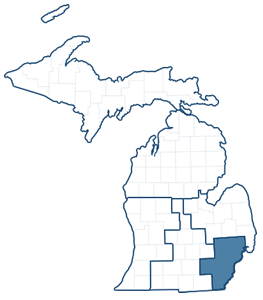Senate Passes Legislation to Protect and Conserve the Great Lakes, Boost Region’s Economy
Thursday, May 22, 2014U.S. Senators Debbie Stabenow and Carl Levin today applauded Senate passage of legislation that will help grow the Great Lakes region's economy while conserving our lakes and waterways. The Water Resources Reform and Development Act, which passed the Senate with a broad bipartisan majority 91-7, ensures that for the first time the Great Lakes are treated as a single navigational system, increases funding for harbor maintenance, and provides broader authority for the Army Corps of Engineers to prevent the infiltration of Asian carp into the Great Lakes. The bill now heads to President Obama for his signature.
"Our Great Lakes are vital to our Michigan way of life, and support hundreds of thousands of jobs," said Stabenow. "Protecting our lakes and maintaining our ports, harbors and waterways is essential to keeping the economy growing and preserving Michigan's natural beauty for generations to come."
"Our nation's economy, health and well-being depend on a strong water infrastructure, and that's especially true for Michigan. This bill makes progress in authorizing programs to strengthen our navigation systems, flood control, drinking water and wastewater systems, and natural resources," Levin said.
The Water Resources Reform and Development Act ensures that at least 10 percent of all new national harbor funding will be set aside specifically for projects in the Great Lakes system. The Great Lakes are also designated as a single navigation system, allowing smaller ports to have higher priority for maintenance requests as part of the larger waterway system.
The bill nearly doubles the amount of funding for harbor maintenance over 10 years. This will help to address the current backlog of dredging and other maintenance projects, which is hurting businesses and stunting Great Lakes commerce. Smaller harbors used for recreational activities and tourism also receive support.
The legislation includes a plan to address spending of the Harbor Maintenance Trust Fund by setting target funding levels to ensure all fees collected for harbor maintenance are used for that purpose by 2025. Currently only half the funds are on harbor maintenance, with the rest redirected into a general revenue fund.
Next Article
















